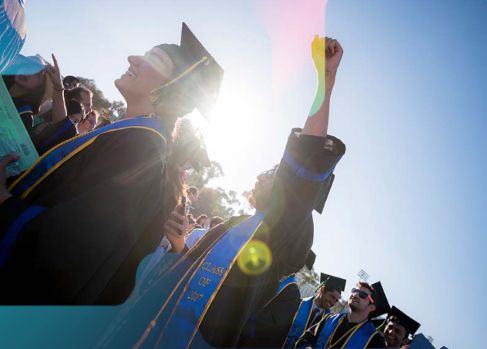The University of California, San Diego (UCSD) is renowned for its academic rigor. Still, students often seek out “easy” classes to balance their schedules, boost their GPA, or explore new interests without overwhelming workloads. While no class is guaranteed to be a breeze, certain courses at UCSD are known for being more manageable due to lighter workloads, engaging content, or straightforward grading. Here’s everything you need to know about finding these classes and tips for succeeding in them.
Understanding “Easy” Classes at UCSD
At UCSD, “easy” classes typically have:
- Lower time commitments
- Less intensive reading or writing
- Grading structures that reward effort over perfection
These courses are often general education (GE) requirements or electives designed to be accessible to students across majors. However, perceptions of difficulty vary—what’s easy for one student may depend on their strengths, interests, and study habits.
For example:
- A STEM major might find humanities-based courses like literature or music appreciation less demanding.
- An arts major might prefer introductory science courses with clear-cut answers.
Read More:
- Top 20 Fully Funded Medical Scholarships for International Students
- Is High School Capitalized? Detailed Guide on Proper Usage in Writing
- 15 Best Musicals for High School Productions (With Audience Appeal!)
- At What Age Do Most Students Graduate From College? All You Need to Know
- Lusail High School Qatar: Admission, Fees, Curriculum & Application Guide (2025)
Popular “Easy” Classes at UCSD
Some frequently mentioned “GPA-friendly” courses include:
- MUS 15 (Popular Music): Explores genres like rock and hip-hop with minimal exams and fun projects.
- HILD 10 (East Asia: The Great Tradition): Engaging lectures with a reasonable reading load.
- PSYC 1 (Introduction to Psychology): Broad overview of psychology with straightforward exams and no prerequisites.
- VIS 20 (Introduction to Visual Arts): Creative assignments with lenient grading, especially for non-majors.
- TDGE 10 (Theatre and Film): Fun projects and light workloads.
Other recommended classes include SOCI 1 (Introduction to Sociology) and ANTH 1 (Introduction to Culture), both known for manageable assignments and engaging content.
How to Find Easy Classes
If you’re looking for less demanding courses, here are some strategies:
- Check Student Feedback: Platforms like RateMyProfessors and UCSD’s CAPE evaluations provide insights on workload and difficulty.
- Browse Online Forums: Reddit’s r/UCSD often shares updated lists of “GPA-friendly” classes.
- Look at GE Requirements: Many introductory GE courses are designed to be approachable, such as CAT 1–3 (Culture, Art, and Technology) at Sixth College.
- Explore Electives: Classes like RECR 6 (Physical Fitness) or LIGN 8 (Languages and Cultures of America) can be fun and low-stress ways to earn credits.
- Verify Course Details: Always check TritonLink or departmental websites for the latest syllabi and instructor updates.
Tips for Success in Easy Classes
Even “easy” classes require some effort. Here’s how to make the most of them:
- Attend Lectures: Many rely on participation, quizzes, or in-class assignments.
- Stay Organized: Track deadlines on TritonEd to avoid piling up work.
- Engage with the Material: Active participation makes creative projects and discussions more rewarding.
- Use Office Hours: Clarify expectations with professors or TAs, especially for essays or subjective assignments.
- Form Study Groups: Sharing notes and prepping together makes even simple courses enjoyable.
Final Thoughts
“Easy” classes at UCSD can be a great way to explore new subjects, fulfill GE requirements, or balance a challenging schedule without sacrificing your GPA. By researching courses, reading reviews, and applying smart study habits, you can maximize these opportunities. Whether it’s learning about the history of pop music, analyzing cultural trends, or enjoying creative projects, these classes can be both rewarding and manageable with the right approach.
UCSD EASy & Academic Tools: FAQs
1. What is UCSD EASy request?
UCSD’s EASy (Enrollment Authorization System) is an online platform where students submit requests for exceptions to enrollment rules—like prerequisites, class restrictions, or instructor approvals.
2. How do I log in to UCSD EASy?
Students can log in with their UCSD Single Sign-On (SSO) credentials at the EASy portal.
3. What is UCSD WebReg?
WebReg is UCSD’s online course registration tool. Students use it to enroll, drop, or waitlist classes. Access it via TritonLink WebReg.
4. What is UCSD VAC?
The Virtual Advising Center (VAC) is UCSD’s online messaging platform where students can directly ask academic advisors questions and receive guidance. Login via UCSD VAC.
5. What is UCSD TritonLink?
TritonLink is UCSD’s main student portal. It provides access to academic, financial, and personal student records, including enrollment, billing, and grades. Visit TritonLink.
6. How do I get department approval at UCSD?
To get department approval, students usually:
- Submit an EASy request explaining their need (e.g., missing prerequisites).
- Wait for review by the department.
- If approved, enrollment access will be updated in WebReg.
7. What is the UCSD course substitution petition?
A course substitution petition is used when students want to replace a required course in their major/minor with another course (from UCSD or another institution). The request is usually submitted through the academic department’s advising office or via EASy.
Discover more from Examsabi
Subscribe to get the latest posts sent to your email.










